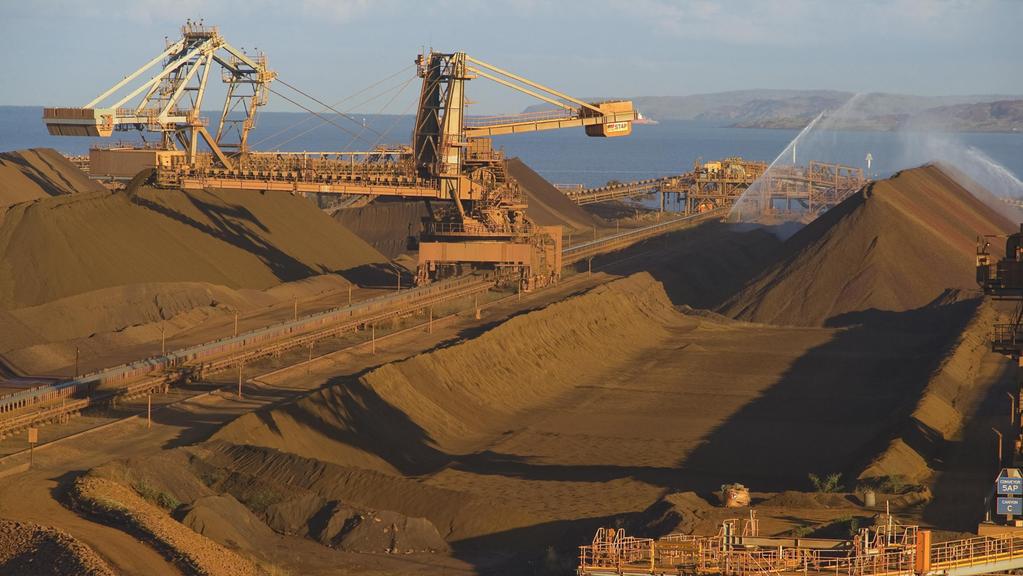Article by Sean Smith courtesy of the West Australian.
 Driven by seemingly insatiable demand from Chinese steel makers, the price of the steelmaking material averaged about $US183/t during the June half. Credit: Aaron Bunch/Getty Images
Driven by seemingly insatiable demand from Chinese steel makers, the price of the steelmaking material averaged about $US183/t during the June half. Credit: Aaron Bunch/Getty Images
Pilbara iron ore is expected to drive a $25 billion windfall to shareholders as the upcoming reporting season propels the industry to what could prove the peak of its profit powers.
BHP, Rio Tinto and Fortescue Metals Group are poised to hand down record dividends for the past six months on the back of remarkably strong iron ore prices, which continue to defy analysts’ expectations by holding above $US200 a tonne.
On current forecasts, the trio’s June-half payouts will top $23b but could surpass $25b, easily bettering the $20b they returned for the December half, which included a special dividend by Rio Tinto.
BHP and Rio have been aided by bumper prices for commodities including copper and nickel, but Pilbara iron ore is the mainstay of profits, generating bumper payouts to shareholders last year and sending share prices to record highs.
Driven by seemingly insatiable demand from Chinese steel makers, the price of the steelmaking material averaged about $US183/t during the June half, up from $US136/t for the earlier six-month period.
The surge is thought to have fuelled an earnings surge that is forecast to have sent cumulative underlying profits by the big three Pilbara miners above $US30b ($41.9b) in the six months to June 30.
BHP is seen paying out at least $US1.90 a share for the period, while FMG could deliver as much as $2.10 a share. Rio, the first of the three to report with interim results due on July 28, is also expected to declare a handsome payout, setting the scene for the group to return as much as $US11 a share to investors for calendar 2021.
Macquarie is expecting BHP to report net annual earnings of $US17.6b, double last year’s result. FMG is also seen doubling to a $US10b profit.
Iron ore’s strength has also seen analysts taking a “stronger for longer” approach, increasing their 2021 forecasts for the commodity while still expecting it to slip back under $US150/t by the end of the year.
UBS expects most commodity prices to fall further over the next 12-18 months as the restocking supporting the post-virus recovery eases and mines disrupted by the pandemic return to normal.
“We see 2021 as the top of the cycle for most major commodities, not the start of a multi-year rally in commodity prices,” it said, but noted, “we do expect cash returns to be large over (the next) 6-12 months”.
Disclosing quarterly production figures on Friday, Rio Tinto revealed it was struggling with buoyant demand from steel makers in China.
China’s steel demand rose 5 per cent in the first half, driven by strong growth in the country’s construction and automotive sectors, according to Rio.
Singapore ore futures touched historic highs above $US230/t in May, but trading for the June half was marked by volatility as China’s steps to cool a commodity boom coincided with its commitment to rein in production in the steel industry.